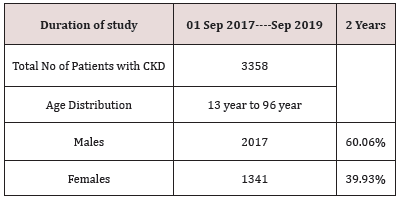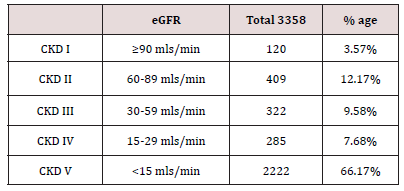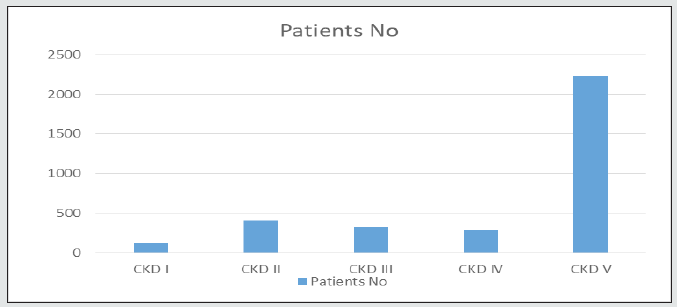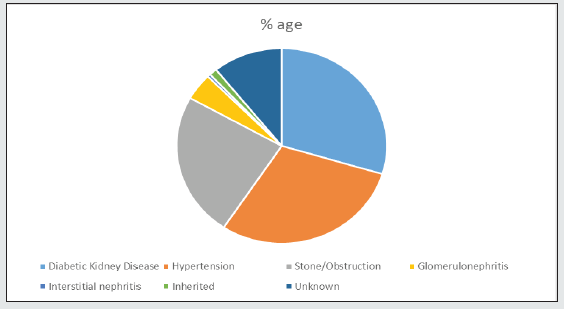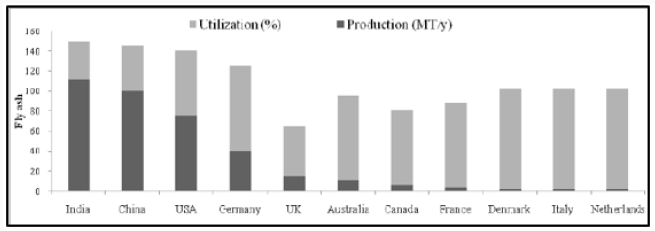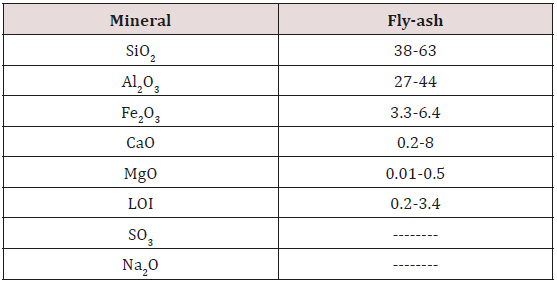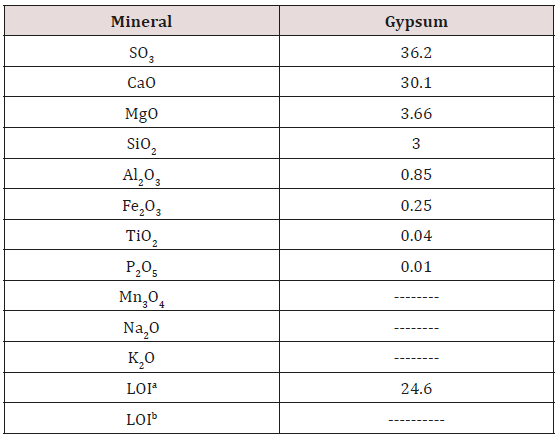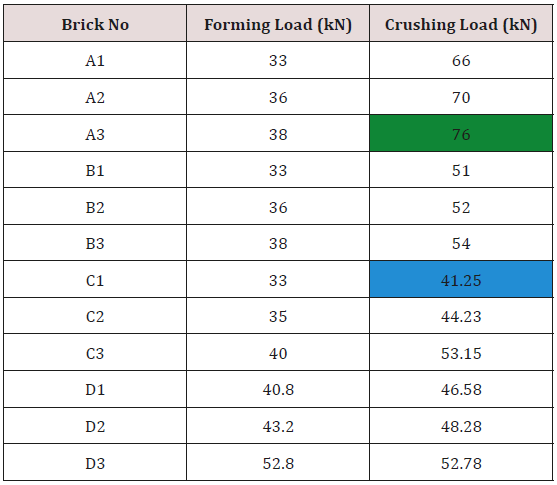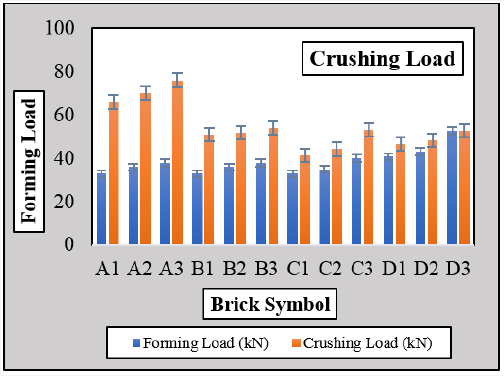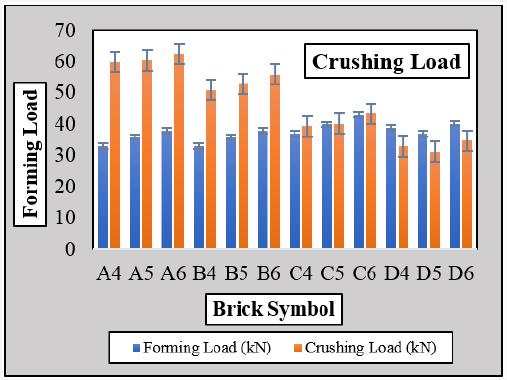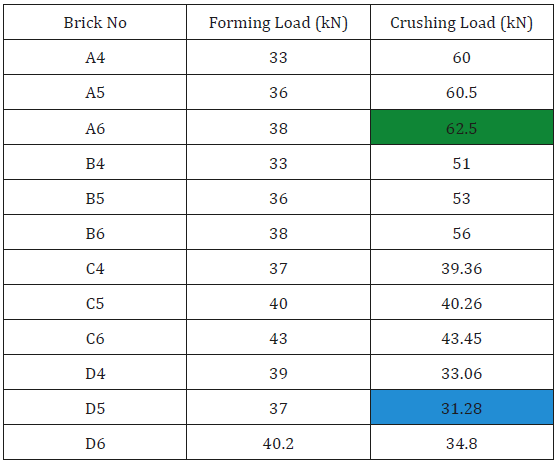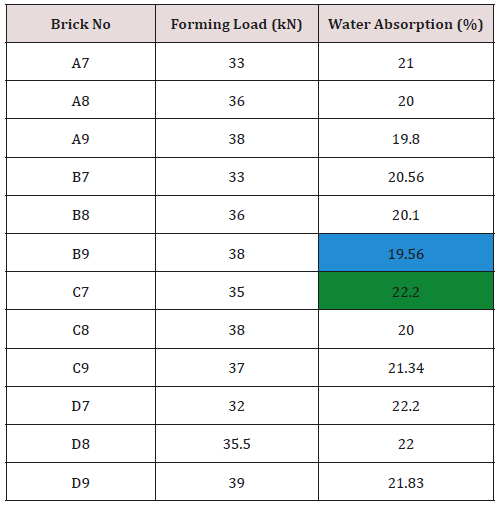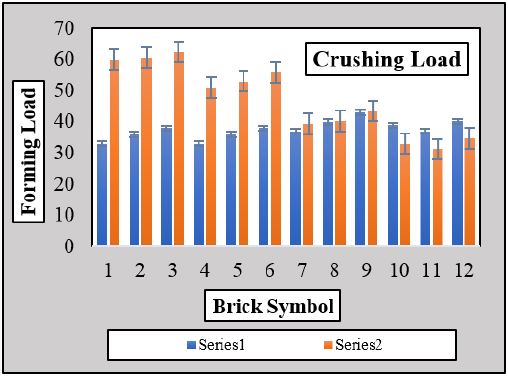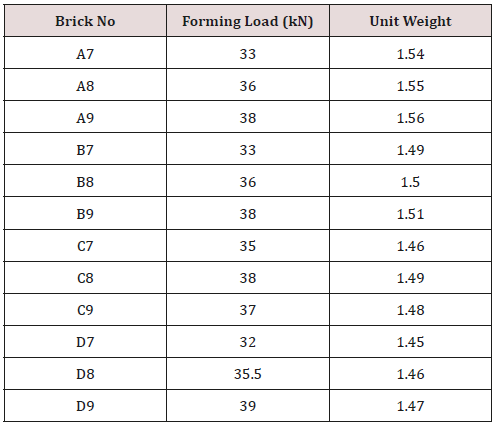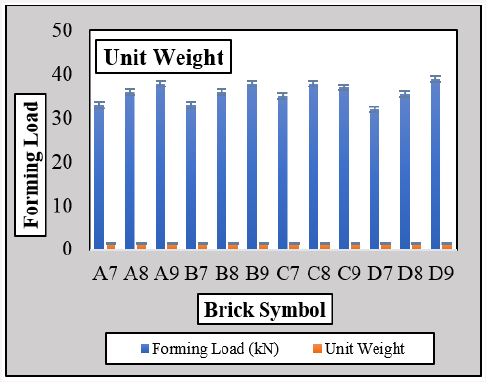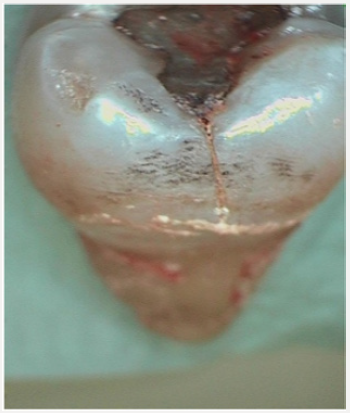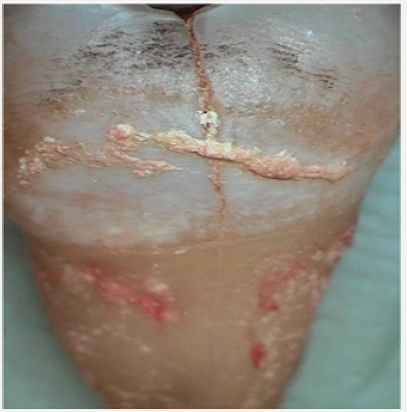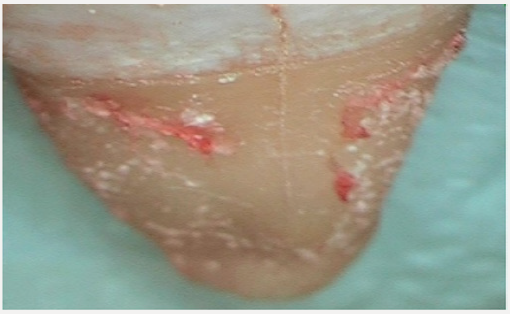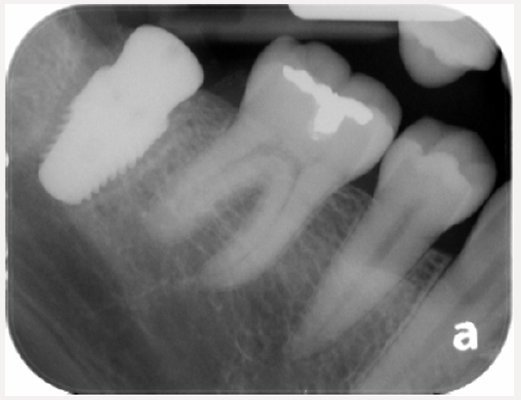’’Children here find refuge in their hopes to die. The fact that
death is equated to life is horrifying me. How are we going to deal with
this generation in the future, how could we talk about life?’’ (Message
from Nadera Shalhoub-Kevorkian, working in the Palestinian Balata camp
during the Israeli raids of March 2002).
’’ I carressed my left breast, I rolled the lump under my fingers and
I told myself it was at the exact same place where my mother,
thirty-seven years earlier, had sewed up the yellow star. Finally, it
had hit us. The much hoped for punishment was here. Would the dead be
resurrected?’’ (Ania Francos, p. 47).
The first quote is from an email message I received from Nadera, an
extraordinary woman I met in Istanbul in September 2001, who works with
and for women in Israel and Palestine. It very much sums up the place we
have reached in our present world: children in the Middle East and in
many parts of the world, hope to die, the world offers them only
despair, injustices are the order of the day… How can it go on like
this? How can we go on living in such a world?
The second one is by Ania Francos, a Jewish woman suffering from
breast cancer who ultimately died from it. Throughout her book,
Sauve-toi Lola, she compares her trial with breast cancer to the ordeal
her family went through with the Holocaust.
In both quotes, we find History repeating itself, as if human beings
had so little imaginations and resourceful creativity, that the only
response they have to violence is more violence and war which in turn
brings more violence and bloodshed.
In this article I would like to make the connection between two major
traumas of 20th and 21st century: war and breast cancer. Throughout my
book, Cancer Journeys, I draw consistently on the same parallel,
equating cancer and war. Having suffered in my body through the war in
Lebanon and through breast cancer, having witnessed the agony and death
of loved ones during the bombing of the city, and at the bedside of
friends succumbing to cancer, I began to get the feeling that the two
were connected.
Close analysis has indeed produced a number of similarities.
I was in terrific pain when I woke up after my mastectomy, and was
given what are commonly known as “pain killers.” There is an uncannily
frequent use in medicine of words that connote violence.
In the treatment of cancer, military metaphors and violent images
abound. The body is ‘attacked’ by poisons in chemotherapy, or “nuked” as
some say; patients undergo “radiation”; surgical intervention is called
an “operation.”
But there’s more: chemotherapy as we know it was discovered during
World War II, “thanks” if I dare say, to the observed effects of nerve
gas. After an explosion of mustard gas bomb containing nitrogen in a
submarine, it was observed that those on board who had been exposed were
all deficient in white blood cells. Since leukaemia features a surplus
of white blood cells, it was thought that nitrogen could halt the
proliferation of the undesired cells. And thus chemotherapy was born.
The presence of war symbolism in cancer made me hate the disease all
the more. My entire being, mind, body and spirit, are in revolt against
this violence-laden aspect of cancer, and all other aspects as well, but
this one in particular. I detest violence, and I sincerely yearn for
the day when there will be gentler, more peaceful treatments for this
disease.
War and the aggressive fight against cancer serve only to transfer
the problem, placing emphasis on the symptoms without getting to the
origin of the evil. War and “battling” cancer are not intrinsically
necessary, but rather represent a failure to deal with problems in
alternative ways, to resolve disorder in a situation that is out of
control. Wars of mass destruction and the aggressive fight against
cancer are the touchstones of the 20th century, of a world that
contradiction and conflict have reduced to tatters.
Lebanon has had its share of war and destruction in the last decades,
between 1975 and 1992, it was torn apart by a civil war fed by many
countries worldwide that cashed in with sales of weapons to various
militias, sometimes to both sides, regardless of alliance. Some militias
in exchange for money and weapons buried
nuclear waste products in various parts of Lebanon. The Lebanese
population is now paying the price with a rise in cancers of all kinds.
Cancers of the mind and heavy depressions plague the youth that
have had to deal with the war. The wounds and scars are visible. It
will take a long time for the country and its people to heal. And then
again two summers ago, Israel hit again in response to Hezbollah
capturing of two of their soldiers and managed to destroy the whole
infrastructure of the country, polluting the air, sea and land, leaving
behind million of fragmentation bombs. It will take years again for
Lebanon to come out of this new disaster!
The hairdresser who came to do Mother’s hair, when I was
visiting her in Beirut in 1995 while recovering from breast cancer,
told me he was used to seeing hair that turned out like mine due to
cancer treatments. It was radiation, particularly, that made it curly
in that strange, electric way. In Arabic he said to me that kahraba
(electricity) caused kahraba. I didn’t believe it when people had told
me hair reacted differently to these treatments, hair that used to be
curly became straight and straight hair turned curly. I thought they
were old wives tales. And I could tell people thought I was making it
up when I told them my hair was not curly like that before.
The Beirut hairdresser told me there were two kinds of cancer:
the feminine and the masculine, the feminine was much more
virulent than the masculine. It was very aggressive, a real killer. I
pondered over his remark: gender differences applied to illness. I
had always been interested in gender differences. It was the subject
of one of my books. In it I analyzed how gender differences were
closely linked to war. Sexuality and war were interconnected. This
popular image of cancer reinforced my analysis in showing that the
fear men have of women was manifested even in their portrayal
of disease. The female brand of a disease (is there any such thing
scientifically?) was much more dangerous than the male one? It
killed faster. Where did the idea come from?
Cancer victims enter, or are pushed into, a space which I have
called “a zone of illness,” where they lose control over their lives
and their freedom of choice; and this state, too, resembles that
of concentration camp victims. Patients enter an organization
conceived as a rational machine, an industrial machine made to treat
the disease, one whose discourse is not to give a conscious choice
to the patient but to orient her/him in a programmed direction.
The patient is not warned about many of the consequences of the
treatment she/he will be subjected to, but discovers them on the
way: castrations, mutilations, loss of certain limbs’ use, certain
pains, threat of other treatment-induced cancers, weakness,
debilitation, fragility, death, danger. They are accompanied by other
consequences often warned about but minimized as “secondary
effects” while actually so central: baldness, nausea, pain, muscle
weakening, heart muscle damage, loss of appetite, burns, tiredness.
The importance of incorporating a discourse on sexuality when
formulating a revolutionary feminist theory became very evident
as I started analyzing and writing about the Lebanese war. The
war itself seemed closely connected with the way people perceived
and acted out their sense of love and power, as well as their sense
of relationship to their partners, to the family and to the general
society. Usually the argument has been made that women’s issues
detract from the war effort, that wars create such conditions of
despair that, within this context, women’s issues are unimportant,
and if the “right” side in a war were to win, women’s problems
would automatically be solved. I argued the reverse. I suggested
that sexuality was centrally involved in motivations to war, and if
women’s issues were dealt with from the beginning, wars might be
avoided, and revolutionary struggles and movements for liberation
would take on a very different path. Justice cannot be won in the
midst of injustice. All these levels are interwoven.
In my book on Sexuality and War, I analyzed how the whole
range of oppression women suffered from in the Middle East:
forced marriage, virginity, and the codes of honour, forced
confinement, the veil, polygamy, repudiation, beating, lack of
freedom and the denial of the possibility to achieve their aims and
desires in life--practices, some of which motivated me to run away
from Lebanon at the age of twenty-two--were closely connected to
the internal war in Lebanon (I was not referring to the Israeli and
Syrian occupations, nor to the foreign interferences). There are at
least seventeen political parties--with many subdivisions—that
were fighting each other in Lebanon. During the war, each of these
parties had different interests; each tried to dominate a small piece
of territory and impose its vision of Lebanon onto that territory.
Each group tried to dominate the others largely through the control
of women in a way I tried to formulate. One of the codes of Arab
tribes is sharaf (honour) which also means the preservation of girls’
virginity, to ensure that the women are kept exclusively for the men
of their tribe.
The means of conquest were given a value in proportion to
their success. The gun, the machine-gun, the cannon--all masculine
sexual symbols which are extensions of the phallus--were put
forward and used to conquer and destroy. For Adam Farrar, there is
a kind of jouissance --pleasure in a sexual sense, no equivalent word
in English--in war:
One of the main features of the phenomenology of war is
the unique intensity of experience. War experience is exactly the
converse of alienation. In war, the elimination of all the norms of
intersubjectivity produces, not alienation, but the most intense
jouissance. The machining of events on the plane of intensity (to
use the Deleuzian image), the form of desire, is utterly transformed.
Power no longer consists in the capacity to redeem the warrants
of communicative intersubjectivity. It consists in the ability of the
spear, the sword, the gun, napalm, the bomb etc. to manifest ‘in
a blast of sound and energy and light’ (or in another time, in the
blood of a severed limb or a disembowelled body), the merest ‘wish
flashing across your mind like a shadow’1.
FOOT NOTE
1 Adam Farrar, “War, Machining Male Desire,” War/Masculinity (ed. Paul Patton, Ross Poole, Sydney: Intervention) p. 66.
Farrar continues, quoting an article by William Broyles in
Esquire entitled “Why Men Love War,” that it is at some terrible
level, for men, the closest thing to what childbirth is for women: the
initiation into the power of life and death2.
In Arab society, most sexual relations are not built on pleasure,
tenderness or love, but on reproduction, the preservation of
girl’s virginity (so-called ‘honour’ of the family), the confinement
and control of women for the increase in male prestige, and the
overestimation of the penis. Many important studies by women
and men in the last few years see a link between sexuality and
national/international conflicts. In an article published in an
important French review entitled Alternatives Non-Violentes,
Jean-William Lapierre, well-known specialist on the subject, sees
a real “deep connection between masculine predominance and
the importance of war3.” According to him, most civilizations are
based on conquest and war. “The importance of hunting, then of
war in social existence, in economic resources, in cultural models
(which valorise the warrior exploits), are at the roots of masculine
domination and of women’s oppression4.” He explains how in socalled
“modern” societies, politics, industry, business, are always
a kind of war where one (mostly men, and sometimes women
imitating men’s behaviour) must be energetic, aggressive, etc., to
be powerful. It is not only capitalist societies which “carry war like
clouds carry the storm, but productivism in all its forms, including
the so-called ‘socialistic’ one. In all societies in which economy
and politics require a spirit of competition (while its ethic exalts
it) women are oppressed5.” And Bob Connell sees a relationship
between masculinity, violence and war. He says that it is not by
chance if the great majority of soldiers are men--of the 22 million
people under arms in the world in 1976, 20 million of them were
men. “Most of the police, most of the prison warders, and almost
all the generals, admirals, bureaucrats and politicians who control
the apparatus of coercion and collective violence. Most murderers
are men. Almost all bandits, armed robbers, and muggers are men;
all rapists, most domestic bashers; and most people involved in
street brawls, riots and the like6.” But such connection should not be
attributed to biology that would absolve masculine responsibility-
-men’s violence associated to some human “destiny”--but rather to
social and cultural factors.
The discussion of sexuality and its relationship to political and
social conflicts is also silenced through women’s unquestioning
adherence to dogmatic political systems of thinking. Many
nationalist and leftist women felt that women should rally behind
the already existing movements and ideologies. Yet in these
movements, traditional morality often filters through dogmas,
setting new barriers between women’s sense of obligation and
their search for truth and freedom. Yolla Polity-Charara provides an
incisive analysis of this problem as exemplified in Lebanese politics.
According to her, many Lebanese women joined political parties
thinking that the condition of women would change. But “how could
it be possible with so many ideological differences and antagonisms,
representing the whole range of political forces in Lebanon, not
to be divergent on the details of women’s demands7.” According
to Charara, the party and ideological loyalties made women loath
to complain about their fate to other unknown women, and even
more so to rivals. The militants among them, when conscious of
the discrimination women faced, when they were not themselves
token-women in the party, preferred to wash their dirty laundry
within the family; they refused to question publicly the men of their
party, to admit that their men were not the most advanced, the most
egalitarian and the most revolutionary. Thus, in such a context,
loyalty and siding with a group became more important than the
issues themselves.
Betty Reardon explains how the patriarchal system is not only
happy with dividing women along loyalty lines, but uses violence
to train people into gender roles which reinforce the war system:
The fundamental willingness to use violence against others
on which warfare depends is conditioned by early training and
continuous socialization in patriarchal society. All are taught
to respect authority, that is, fear violence... Boys and men are
encouraged to become more fierce, more aggressive when they
feel fear. Fear in men is channelled into aggression, in women
into submission, for such behaviours are necessary to maintain
patriarchal authoritarianism. Aggression and submission are also
the core of the basic relations between men and women, accounting,
many believe, for women’s toleration of male chauvinism. Some
assert that these behaviours are the primary cause of all forceful
exploitation, and account for perhaps the most significant common
characteristic of sexism and the war system: rape8.
Issa Makhlouf in his book, Beirut or The Fascination with
Death, talks and analyzes rape in the war of Lebanon, a subject
no one before him had been willing to expose. He says that it is
another facet of the Barbary, frequently practiced by militias during
massacres and occurring almost everywhere on Lebanese soil.
The fixation of militias on sexual organs did not only hit
women. Several male cadavers were discovered with their sex
cut off and sometimes pushed into their mouths; the simulation
of fellatio, generally repressed by morality, is very revealing as a
rejection of moral codes. On the other hand, numerous mutilations
were practiced on victims, dead or alive. In rape, all forms of
violence are combined. All possibilities of death and pleasure are
present. All dreams of domination are fulfilled. The victim of rape
is the toy of all phantasms and ambitions. Rape is the place of all
experimentations9.
FOOT NOTE
2 2Ibid., p. 61.
3Lapierre, «Femmes: Une oppression millénaire.» Alternatives non-violentes: Femmes et violences 40 (Spring 1981) p. 21.
4Ibid.
5Ibid., p. 22.
6Bob Connell, “Masculinity, Violence and War,” War/Masculinity, op. cit., p. 4.
7Yolla Polity Charara, “Women and Politics in Lebanon,” Third World, Second Sex (op. cit.) pp. 19-29.
8Reardon, op. cit., pp. 38-39.
Susan Brownmiller in Against Our Will has shown how rape
is a conscious tactic of warfare10. Michel Foucault has written a
great deal on the connection between death, sex, violence and
male sexuality11. Wilhelm Reich has analyzed how repressed
sexuality based on authoritarian family patterns is at the root of
sadistic murders, perversions, psychological problems, social and
political conflicts12. And Farrar notices that: “War is a paradigm of
masculinist practices because its pre-eminent valuation of violence
and destruction resonates throughout other male relationships:
relationships to other cultures, to the environment and, particularly,
to women. If the ‘masculinism’ of war is the explanation for its
intractability, then we must follow this path to its conclusion,
wherever that may be13.”
The whole system must be changed and rethought. To use
Betty Reardon’s words:
What I am advocating here is a new world order value,
reconciliation, and perhaps even forgiveness, not only of those who
trespass against us, but primarily of ourselves. By understanding
that no human being is totally incapable of the most reprehensible
of human acts, or of the most selfless and noble, we open up
the possibilities for change of cosmic dimensions. Essentially
this realization is what lies at the base of the philosophy of nonviolence.
It we are to move through a disarmed world to a truly
non-violent one, to authentic peace and justice, we must come to
terms with and accept the other in ourselves, be it our masculine
or our feminine attributes or any of those traits and characteristics
we have projected on enemies and criminals, or heroes and saints14.
And as Andrea Dworkin put it: “To transform the world we
must transform the very substance of our erotic sensibilities and
we must do so as consciously and as conscientiously as we do any
act which involves our whole lives15.”
By sexual revolution, I mean one which starts at the personal
level, with a transformation of attitudes towards one’s mate,
family, sexuality, and society; specifically, a transformation of the
traditional relations of domination and subordination which
permeate interpersonal relationships, particularly those of sexual
and familial intimacy. We need to develop an exchange of love,
tenderness, equal sharing and recognition among people. This
would create a more secure and solid basis for change in other
spheres of life--political, economic, social, religious, and national,
as they are often characterized by similar rapports of domination.
As Elisabeth Badinter insightfully expressed:
Equality, which is taking place, gives birth to likeness which
stops war. Each protagonist wanting to be the ‘whole’ of humanity,
can better understand the Other who has become his/her double.
The feelings which unite this couple of mutants can only change in
nature. Strangeness disappears, replaced by ‘familiarity’. We may
lose some passion and desire, but gain tenderness and complicity,
the feelings which unite members of the same family: a mother to
her child, a brother to his sister... At last, all those who have dropped
their weapons16.
The similarities and differences between the ways women and
men express and deal with violence and sexuality can lead us to
a greater comprehension of the complexities in the relationship
between the two and bring us to a solution: i.e. a new rapport between
men/women, women/women, and men/men, relationships based
on trust, recognition of the other, tenderness, equal sharing and love
void of jealousy and possession. My contention--going along with
the cherished vision of Feminists--that the personal is the political,
changes in relationships traditionally based on domination,
oppression and power games will inevitably bounce back on other
spheres of life.
FOOT NOTE
9 Issa Makhlouf, Beyrouth ou la fascination de la mort (Paris: La Passion, 1988) pp. 88-90.
10Susan Brownmiller, Against our Will: Men, Women and Rape (New York: Bantam, 1976).
11See in particular Michel Foucault, “Tales of Murder,” I, Pierre Rivière (Penguin, 1978).
12Wilheim Reich, L’irruption de la morale sexuelle (Paris: Payot, 1972, first published in German in 1932).
13Farrar, op. cit., p. 59.
14Betty Reardon, Sexism and the War System (New York/London: Teacher’s College/Columbia University, 1985) p. 94.
15Andrea Dworkin, Marx and Gandhi were Liberals: Feminism and the ‘Radical’ Left (CA: Frog in the Well, 1980) p. 6.
16Elisabeth Badinter, L’un est l’autre: Des relations entre hommes et femmes (Paris: Editions Odile Jacob, 1986) p. 245.
Examples from the Lebanese War Novels
I will quote two passages from two Lebanese war novels, and
you can guess which one was written by the woman and which by
the man:
And this city, what is it? A whore. Who could imagine a whore
sleeping with a thousand men and continuing to live? The city
receives a thousand bombs and continues its existence nonetheless.
The city can be summarized by these bombs... When we had destroyed
Beirut, we thought we had destroyed it... We had destroyed this city at
last. But when the war was declared finished and the pictures of the
incredible desolation of Beirut were broadcasted, we discovered we
had not destroyed it. We had only opened a few breaches in its walls,
without destroying it. For that, other wars would be necessary.
This city is like a great suffering being, too mad, too overcharged,
broken now, gutted, and raped like those girls raped by thirty or forty
militia men, and are now mad and in asylums because their families,
Mediterranean to the end, would rather hide than cure...but how does
one cure the memory? The city, like those girls, was raped...In the City,
this center of all prostitutions, there is a lot of money and a lot of
construction that will never be finished. Cement has mixed with the
earth, and little by little has smothered most of the trees. If not all.
In these two images of Beirut, two opposing feelings are being
expressed, two contrasting visions emerge. The first wants to get
rid of the sinner, the whore, source of all evils, decadence, and the
problems of modern existence. The total and violent destruction of
the woman is seen as the only way out of an inextricable situation.
The second feels sorry for the woman, the city, victim of rape, victim
of man’s violence. Mediterranean customs are accused. Hypocrisy
and the oppression of women are presented as the origin of
madness and the destruction of the city.
The first quote is by a man, Elias Khoury, author of The Small
Mountain (Minnesota: University of Minnesota Press, 1990)17, the
second by a woman, Etel Adnan, author of Sitt Marie Rose (Sausalito,
Calif.: Post-Apollo Press, 1982)18. This difference between a man
and a woman’s visions of Beirut and their ways of expressing them
was even more clearly defined one year during the war, as I watched
women friends, determined to cross Beirut two or three times
a week, pass through the demarcation line--the most desolate,
depressing and often dangerous spot in the city. They went most
of the time on foot, as only a few cars with special permission were
allowed through. They were convinced that by this gesture, real as
well as symbolic, Lebanon’s reunification would take place. They
did this against all logic, under the ironic and sometimes admiring
look of male companions19. Defying weapons, militias, political
games, women friends told me how that site had become a meeting
place where each morning they looked forward to seeing this
friend or that one, walking steadfastly in the apocalyptic space of
the museum passage (another name for the no man’s land dividing
the city, because the museum is located there). They smiled at each
other as they walked assuredly, conscious that their march was not
an ordinary one, that their crossing was a daring act, important and
vital to Lebanon’s survival.
I have chosen six novels about the war to illustrate the
connections between sexuality, war, nationalism, feminism, violence,
love and power as they relate to the body, the partner, the family,
Marxism, religion, and pacifism. These novels do not necessarily
represent the entire range of creative works about the war20. They
were chosen for their significance in terms of the issues under
discussion and for their availability in languages understandable
to the Western reader. The works, originally written in Arabic or
French, are by Lebanese women and men authors who have lived
or are still living in Lebanon. All of the novels chosen are set in
Beirut, in the context of the war. Days of Dust (Washington: Three
Continents Press, 1983)21 by Halim Barakat and Death in Beirut
(London: Heineman, 1976)22 by Tawfiq Awwad--works written
before the war started in 1975--foreshadow the events. Even
though the subject is treated differently, all of the writers show
how war and violence have roots in sexuality and in the treatment
of women in that part of the world. Most of the characters meet
a tragic fate due to the war, but women are the principal victims
of both political and social violence. For example, the heroine of
Death in Beirut is seduced, raped, beaten, her face slashed, her
ambitions smashed, as she tries to gain autonomy and education
in the midst of her country’s social and political unrest. Zahra, in
The Story of Zahra (London: Readers International, Quartet Books
Limited, 1986)23 by Hanan El-Cheikh, who tries to find a way out
of herself and of the civil war that has just erupted by having a
sexual relationship with a sniper, becomes the target not only of his
sexual weapon, but of his Kalashnikov as well. In the end, he kills
her. In Etel Adnan’s novel Sitt Marie Rose, Marie Rose is struggling
for social justice, Arab women’s liberation, and directs a school for
the handicapped. She is put to death by Phalangist executioners
who first torture her to get rid of their bad conscience. In House
without Roots (Paris: Flammarion, 1985)24 by Andrée Chedid, Sybil
dies from a sniper’s bullet at the point of possible reconciliation,
the place where Kalya advanced trying to save Ammal and Myriam,
one of them having been hit by the sniper’s death machine as they
were starting a peace march. In Days of Dust, Pamela, trying to find
herself by helping the refugees and protesting against American
imperialism, loses herself in a no-exit relationship with the male
protagonist. And in Elias Khoury’s novel The Small Mountain,
the female characters are destroyed, disappear, or are trapped in
disgustingly hateful marriage routines.
In addition to the relationship between war and sexuality,
I examined the positive and negative actions and resolutions
male and female characters took, the differences and similarities
between male and female protagonists, between male and female
authors, and between those writing in Arabic and in French. I also
tried to assess the necessary changes Lebanon had to undergo to
solve its tragedy and play, once again, the democratic role--melting
pot of tolerance and freedom--it had in the region, and which is so
much needed in that part of the world.
In this study, my hypothesis was verified and showed that
although both female and male novels make the connection
between sexuality and war, their ways of expressing it, and most
of all the solutions implied, are quite different. Women writers
paint the war and the relationships between women, men and
their families in the darkest terms: sexuality is tied to women’s
oppression and the restrictions put on their lives, the war brings
destruction, despair and death. The female protagonists look for
alternatives in non-violent active struggles such as peace marches,
engagement in causes to help the oppressed and the dispossessed. At the
same time, they seek for changes in their life styles and in
their relationships with the men and families around them. Men
writers also paint the war and men/women relationships in the
bleakest terms, emphasizing the connection between the two.
But their depression does not lead them to search for alternatives
different from the historically accepted ones: heroism, revenge and
violence as catharsis to men/women deplorable communication.
FOOT NOTE
17 First written in Arabic (Al-Jabal al-Saghir, Beirut:
Mu’assassat al-Abhath, 1977) also available in French (La petite
montagne, Paris: Arléa, 1987).
18 First written in French (Sitt Marie-Rose, Paris: Des Femmes, 1977).
19 There are also men who, believing in the reunification
of Lebanon, make the gesture, crossing the demarcation line, but it
seemed to me they were
fewer than women--perhaps because men risk more, are more often victims
of kidnappings, assaults, murders. Men do it more in a spirit of duty or
for
professional interests.
20Cooke, op. cit.
21First written in Arabic (‘Awdat alta’ir ilal bahr,
Beirut: Al’Mu’assassat Al-’Arabiya, 1969), also available in French (Le
vaisseau reprend le large, Sherbrooke:
Naaman, 1977).
22First written in Arabic (Tawaheen Beirut, Beirut: Dar al-Adab, 1972).
23First written in Arabic (Hikayat Zahra, Beirut:
Al-Nahar, 1980), also available in French (Histoire de Zahra, Paris:
Lattès, 1980).
24First written in French (La maison sans racines, Paris:
Flammarion, 1985) also available in English (Return to Beirut, London:
Serpent’s Tail, 1989).’
In both women’s and men’s writing, the war is used to break
down the patriarchal system and the traditional order. The female
protagonists do it through masochism while the male ones use
cruelty and sadism. But such action/reaction leads nowhere
because the use of war to free oneself from domination and
oppression only reinforces the authoritarian order by reproducing
the power structure with different colours.
Both women and men writers question God and the use of
religion in war. Institutionalized religion is blamed explicitly, while
faith and personal belief are praised implicitly and constitute--
more specifically in the women writers--strength and a way of
overcoming war. So while male protagonists justify their fighting
through religion or to show how it was used for imperialist
purposes, the female ones draw their strength in helping the
oppressed, sacrificing themselves for others welfare and in active
non-violent struggles.
Both women and men writers seem to concur in showing female
protagonists whose political outlook and actions are accompanied
by similar ways in their personal lives, while male protagonists
live double standards and hypocritical attitudes. In male authors,
the female protagonists who are concerned and active politically
also reject the traditional passive roles and refuse the taboos
surrounding virginity and sexuality. They find themselves in
situations where they are unable to live this conscious desire to be
free because the men around them cannot cope with it. The irony
is that these men voice beautiful statements concerning the need
to achieve revolution in both domains: the private and the political,
but when it comes to actualizing these theories in interpersonal
relationships, it is as if they were paralyzed. It leads one to really
doubt the effectiveness of what they advocate. Both male and female
authors agree in portraying this difference between their male and
female protagonists. To this characterization, women authors add
an element not found in the men: their female protagonists often
affirm themselves and live different life styles even if it means being
marginalized, having to live in exile or being put to death.
Another major preoccupation of female and male writers is
their outlook on multiculturalism and the question of roots, exile
and pluralism mixed with violence and war, and how it is reflected
in interpersonal relationships. Female authors tend to see mixity
as something positive. Exile often means freedom. The search for
roots can be an expression of nostalgia for one’s childhood or a
need for security and love. Male authors tend to depict mixity as
confrontation. Their search is for purity, mixity meaning dishonour.
Multiculturalism increases their schizophrenia and makes them
uneasy and depressed. Roots are a search for identity and exile is
a terrible fate.
For example, Kalya in House Without Roots, raises questions
about the significance of roots, and expresses the importance of
grafting within her all the various roots and sensitivities of the
cultures she is made of. She insists on the positive aspects of such
hybridization and cosmopolitanism, and the enrichment, tolerance
and openness it brings. These values are what Lebanon used to
represent and what Kalya had come to seek. While Ramzy in Days
of Dust, despairs at multiplicity which he associates with loss
of identity, and sees it as one of the causes for the war. Ramzy is
constantly split between East and West. It leads to schizophrenia
and the inability to harmoniously integrate the various sides of his
personality.
Intercultural and interconfessional marriages reflect the same
outlook. Women authors depict female protagonists who live them
harmoniously and with a great sense of achievement, commitment
and possible solution to the war (even when they get killed because
of it as with Marie Rose). Men authors show male protagonists
split between a desire to achieve mixity on the political level and
an impossibility to live it in their personal lives, even when they
have voiced the importance of breaking down tradition on that
level. Men authors also depict female protagonists better able to
harmonize the personal with the political. Their failure to achieve
true liberation stems not from their lack of action, but from the
males’ inability to realize it with them.
Another notion implied by both female and male novels is
androgyny. In this domain, there is less contrast between the two
genders. Both women and men authors depict the negative and
positive aspects of androgyny. Adnan refers to an androgynous
mythical past to confront the male protagonists with their corrupted
values. Chedid shows women characters who assume traits
traditionally viewed as masculine. And Awwad also portrays women
who, in order to free themselves, take on a masculine discourse
and decide to engage in guerilla warfare. In these two authors
however, the outcome is not positive. It does not engender life, nor
is it a solution to war. And Barakat’s male protagonist who assumes
both the female and male sides of his personality is not portrayed
as having harmoniously integrated the two. He is constantly ill at
ease and torn between aggressiveness and masochism, the male
side being associated with victory and the female with defeat. The
most positive portrayal of an androgynous character is in Khoury.
One of the main protagonists is described as androgynous-looking
and appears free from society’s restrictions. She is obviously a
projection of who the central male character would like to be, how
he imagines freedom and a way to reject war. This androgynouslooking
character laughs, argues, moves freely, captivates the
hero, runs towards the sea, and is unattainable because the man
is too busy fighting “the revolution.” Why did the author choose to
construct an androgynous-looking woman to represent freedom? Is
he saying that woman and man are doomed to destroy each other and that only the androgynous can escape such fate? The novel as
a whole does not seem to imply such a solution. Freedom is never
chosen as the answer to men and women’s miseries. Instead,
destruction appears as the ultimate response to human condition.
The question of poverty and class-consciousness related to war
and women’s condition emphasizes women writers’ awareness,
leading them to search for positive alternatives, while men writers
use it to justify violence. Both male and female authors show the link
between the fate of the dispossessed, their struggle to overcome it,
women’s oppression and the war. Awwad paints a direct connection
between the classes his female protagonists belong to and the
degrees of abuse and violence they are subjected to. Chedid shows
women characters whose private and political consciousness and
commitment gives them real awareness and sensitivity to the
condition of the poor and vice versa: watching the poor’s lives leads
them to become socially committed and active for change in their
personal as well as political lives. Similarly, Adnan portrays a female
protagonist who is socially, politically and personally committed to
women’s issues and to the fate of the poor, the dispossessed and the
oppressed in general. As for Khoury, he often talks about “the war
of the poor” to describe the link between oppression and war, and
to justify a revenge of the dispossessed. The crowd, which invades
the plush hotel district of Beirut, is coming from camps, ghettos and
the poor areas of Lebanon. Khoury ironically recalls the name they
walk on “France” (there is such a street in Beirut), to show it is also
a revenge of the colonized against the colonizers.
Both male and female authors paint the disastrous consequences
of virginity rites connected with the notions of honour, ownership
of women and sexual relationships. It is these customs, which
lead Al-Shaykh’s female protagonist to despair, madness and final
death. She rejects them from the beginning and is revolted against
male’s views of her body and sexuality. She would like to be freed
from them and in control of her body and of her life. She uses the
war to break down the taboos and to assert herself sexually. She
finds out that the war is much stronger and more destructive than
anything she has known before, and that the customs she hoped
to get rid of through it are only temporarily shifted. They come
back with greater strength and more destructive violence. And
Adnan uses the narrator’s voice to comment on the frighteningly
dangerous outcome of the codes of honour related to virginity,
and how they reinforce tribal confessional sectarianship. As for
Awwad, he shows the direct link between the customs of virginity,
the exclusive propriety of women leading to violence and crimes at
the foundation of a society built on divisions and an exclusive sense
of propriety. In such a system, women are dominated, raped, led to
suicide or killed by men themselves manipulated by political power.
It is a vicious circle of power struggles in which women are the
ultimate victims. And Barakat, through the interwoven stories of
the Hyena and the Flying Dutchman, demonstrates the importance
of the concept of virginity and the codes of honour related to
women’s roles in society, with the strong implications of woman as
earth, and Palestine as the ultimate woman.
In most of the novels under study, the codes of honour--related
to virginity and to crimes meant to wash the family’s or tribe’s
honour/pride in blood--are connected to rape, itself associated
with death. Rape is linked to the notion of death. It is the absolute
forbidden (specially on women of one’s tribe) therefore the absolute
temptation of death (when inflicted on women of the other tribe).
Men prove their masculinity through sexual acts of violence against
women of the other clans. It, therefore, reinforces the system of
the clan by making women vulnerable and in need of the men’s
protection. In Al-Shaykh, the major female protagonist is subjected
to rapes throughout her sexual life, which ends with death as
the ultimate rape. In Awwad, the sexual act, in most of the men’s
imagination and in their practice, is associated with rape. They
seem unable to conceive of it differently; it is part of the system of
power where they prove their masculinity and domination. Their
way of conceiving sexuality often results in the death, suicide or
annihilation of the female protagonist. And in Khoury, the wish
of the central male protagonist is for the city/woman to be raped
because she is like a prostitute and incarnates all the decadent
moral values of industrial and modern life. But rape is not enough,
it has to reach its limits into total destruction, and the devastation
has to spread to other cities/women in the world, leading to
annihilation and oblivion. While in Adnan, who also compares the
city to a woman, she sees her rape/destruction as men’s ultimate
cruelty, sadism and violence. She feels sorry for this woman/city
and seeks for solutions in peaceful non-violent alternatives, even in
the notion of self-sacrifice if that could help alleviate the hate and
destruction. As for Barakat, the images used for the Arabs’ being
defeated by Israel are of invasion, destruction and rape, taking
place on the male protagonist’s body that is utterly frustrated and
depressed because rendered powerless.
Sexual relations conceived in a system of power struggles and a
structure of submission/domination will obviously result in rapes
and in the abuse of women. Rapes are associated with unwanted
pregnancies and abortions. In none of the war novels do we find
conception, pregnancy and giving birth as something positive and
happy. Both female and male authors seem to view life conception
and creation as impossible and repulsive in the context of the war.
The female protagonists are the ones who pay the price, because
the male protagonists view women as having to assume the whole
responsibility of contraception and pregnancy. The sexual act being,
in most instances, one of rape and domination, women appear as
mere objects of possession, vessels into which the men pour their
anger and frustration, prolongation of the feelings and acts of war.
Abortion is the direct result of rape, like destruction is the direct
result of war. Life cannot be engendered in such a context.
The novels by both male and female authors end with the brutal
death of some of the female protagonists. Their death is the direct
result of the male protagonist’s violence, worse perpetrators of the
war. Zahra and the child in her womb die from the sniper’s--and
father of the child--bullet. A gang of young Christian militiamen
executes Marie Rose. Young Sybil also dies from a sniper’s bullet.
Zennoub is cruelly gang raped and, as a result, she commits suicide.
While Miss Mary, who shows real solidarity for her female friends,
and who tries to protect Tamima dies, shielding her from her
brother’s cruel hand. In only one of the male author’s novel, one
of the male protagonists dies. It is from fighting and one does not
feel as sorry for him as with the female protagonists’ deaths. His
death is the result of his own violence and not a cruelty inflicted
from the outside as with the women. Even if violence coming from
the oppressed holds a certain justification, the death of its victims
does not stir our sympathy, as does the death of innocent victims.
In all of the studied novels, female and male authors concur in
portraying their female protagonists as the ultimate victims. Where
they disagree is in showing their responsibility and/or innocence.
Khoury is the one who holds women responsible for their own
victimization. His rage against the victims is so great that he calls
for their total destruction. It is as if he were blaming the oppressed
for being oppressed and calling for more oppression to get rid of
oppression. Fanon’s view of violence as catharsis can be compared
to Khoury’s call for total annihilation. They both call on negative,
destructive means for the transformation of society. There is a
similar element in Al-Shaykh’s novel where Zahra who goes to the
sniper seeks a homeopathic cure against the war. The difference
between Khoury and Al-Shaykh is that Zahra does it through
masochism, thereby emphasizing her own victimization, while
Khoury inflicts it through sadism, thereby increasing the cruelty
and expressing a total lack of compassion for the victims.
Finally, an obvious conclusion to this study is that the fear
men have of women leads them to domination and war, while
the fear women have of men’s violence leads them to masochistic
submission or/and rejection of the men, and commitment to
political, human and feminist causes. Both the female and male
authors agree on this. For example, the sniper’s first reaction to
Zahra is rape, as a way of proving his masculinity through control
and domination. Fear is one of his primary motivations: fear of life,
fear of women’s capacity to reproduce, to give birth, fascination
with death and destruction. He does not want to assume the
responsibility of the life he has engendered in Zahra’s womb, when
he daily kills innocent victims and destroys life. In order to reestablish
the chaos, daily drug and only meaning of his existence,
he must kill her. And for Talal in The Small Mountain, fighting is
like making love to a woman: it is frightening and never fulfilling.
The author describes a group of fighters who have lost the meaning
of life, a fraternity of men always afraid, attracted and repulsed
by women and by war, who know only destruction in which they
loose themselves. The hate and fear they feel for women becomes
their ultimate motivation for war. Such fear is epitomized by the
relationship the central character has with his wife. The author
describes boredom and weariness in their relationship, thereby
trying to justify the need for war to bring about necessary changes.
The main character has an obvious fascination with death and
destruction, which is closely related to his sense of pleasure. He is
chained to his wife through habits he can only destroy through war.
And he runs away from the other two women in his life, because
they represent life and freedom, which he is unable to accept, busy
as he is with destruction. It leads to an obsession with destruction,
as if destroying the city and the woman it symbolizes brings in
ultimate jouissance. And Zahra, afraid of the violence ripping her
country apart, submits herself masochistically to one of its worse
perpetrators, thereby hoping to overcome her fears. While the
central women characters, in House Without Roots, live their lives
independent from men and with a commitment to bring about the
transformation of society through peaceful means. And Marie-Rose
stands in front of the fascist young men of her country, confronting
them with their perverted values, in an act that defies their violence
and rejects them all together. This chabab gang is afraid of Marie-
Rose who epitomizes feminine/feminist values and who dares
confront them with words, showing them their corruption while
asserting her w-humanism and her commitment to the oppressed
and the downtrodden. They will have to get rid of her, just like the
sniper had to get rid of Zahra.
Thus, while women writers are finding a way out, a circle of
hell is being perpetuated, each sex fearing the other, the male
one starting the chain through violence and domination. Only a
different vision, new actions, and altered relationships based on
trust, recognition, and acceptance of the other can help heal the
wounds and bring about the cure necessary to project a new future
for the world. Such a change has already started taking place with
personal and political actions aimed at solving the problems rooted
in oppression, domination, and the victimization of women. Writing
this article has been one of these actions.
The connection between sexuality and war is so present in the
novels that it is probably one of the most evident unifying themes. It
demonstrates how strongly at work it is in the collective imaginary
or culture of the people and how central it is to an understanding
of the situation and the causes of the war. The similarities and
differences between the ways women and men express and deal
with violence and sexuality can lead us to a greater comprehension
of the complexities in the relationship between the two and bring
us closer to a solution: i.e., what I have described throughout this
study as the need for a new rapport between men/women, women/
women, and men/men, relationships based on trust, recognition of
the other, tenderness, equal sharing and love void of jealousy and
possession. My contention being that the personal is political--a
vision also dear to Feminist movements--changes in relationships
traditionally based on domination, oppression and power games
will inevitably bounce back on other spheres of life.
What Miriam Cooke writes about the Lebanese women writers’
vision of Lebanon as a sick child in need of care, became for me a
reality. It was the Lebanese war, which made me want to go back
and try to help. I would not have felt the same concern for Lebanon
had it not been for the war and for what I perceived as real suffering
in my friends and many of the people I came in contact with. I
shared their pain and desire to remedy. It led me to apply for grants
to go and teach there. My experiences in living the war, talking with
students, teaching, conducting research, travelling in Lebanon, crossing
the demarcation line dividing the city, participating in nonviolent
peace initiatives, spending time in the shelter when shelling
became too violent, sharing the anguish and suffering of friends
and relatives, gave me insights I might not have had otherwise. It
led to a conviction that only peaceful means could bring about a
solution to Lebanon and reunite the country. It also showed me
the importance of activism for the transformation of society: peace
marches, hunger strikes, consciousness raising groups, solidarity
among women, singing, writing, crossing the divided city, and most
of all, changing the system of rapport between men and women,
the values connected with these relations and the confessional
structures tied to the concepts of honour, virginity, exclusive
property and oppression.
It also became very clear to me that women’s solidarity and
an international feminism, uniting women all over the world, are
vital in bringing about such changes. I would like to stress the
importance of achieving unity in the midst of cultural differences,
if we want to provide some hope in ending the war culture which
exists all over the world. I became very aware, when in Lebanon, of
the strength the peace initiative started by two women from enemy
communities had, first on women, and then on the population as a
whole, in uniting people towards peace. It is one of the rare times
in my life I witnessed the tremendous impact, which values of love
and tolerance can have on people.
The activities I have described above--such as going to Lebanon,
teaching, researching, living the war, crossing the demarcation
line, participating in non-violent peace initiatives, discussing with
students and with people directly affected by the war, writing a
novel about it, composing songs on the war and performing them
in public--undertaken as a result of my concern and suffering
over the destruction of my country, are directly involved with the
transformation of society. Changing the system and the values
behind it requires more time and a long process of in-depth
political, economical, psychological, religious, sexual, familial and
social transformations established on an understanding of the
different factors, causes and links between these various fields. My
concern over long range plans to bring about social transformations
necessary to end the war system and bring about hopeful and lasting
changes to a world falling apart made me undertake this study and
analyze the relationship between sexuality, war and literature.
When the English version of my novel The Excised was going
into its second edition in 1994, I found myself being faced with
mastectomy or lumpectomy, having being diagnosed with breast
cancer. These two ectomies are lived by an increasing number of
women all over the world, and particularly in the United States. It is
the price we pay for modern civilization. The pollution, pesticides,
depletion of the ozone layer, nuclear disasters, oestrogen induced
carcinogens, mistreatment of nature are finally catching up
with us. As Chikwenye Okonjo Ogunyemi well expresses in an
article untitled, “Ectomies: A treasury of Juju Fiction by Africa’s
Daughters,”: “Cultural determinism becomes the focal point of
the politics of ectomy: to cut or not to cut? The mind boggles at
Western culture’s playing on women’s bodies: hysterectomies,
oopherectomies or ovariectomies, salpingestomies, episiotomies,
mastectomies... I envision ectomy as a trope to express the excision,
the cutting off, the exclusion attached to woman’s destiny25.” I was
too overwhelmed by emotions, fears, anguish, rage, but also a
renewed sense of the urgency, beauty and cruelty of life to be able to
express what I was going through at the time, except in my journal.
My journal became a publication: The Wounded Breast: Intimate
Journeys through Cancer. Melbourne: Spinifex Press, July 2001,
543 pages (available as e-book on www.spinifex.com). Voyages
en Cancer (Préface Yves Velan). Paris: L’Harmattan, Tunis: Aloès,
Beirut: An-Nahar, 2000, 448 pages. Phénix Prize 2001. The link that
ties me to all the women around the world was being reinforced in
this tribulation and sorrow.
In conclusion I would like to point out that those who suffer the
most in wars and violent conflicts are women. They not only bleed
from the devastations caused by wars and armed conflicts, often
through rapes, torture and death, but they are also often crushed
and rendered silent through practices such as crimes of honour,
beatings, veils and confinement. It has become urgent to link all
these various traumas of our time in order to gain better insights
in how to solve them.
FOOT NOTE
25 Chikwenye Okonjo Ogunyemi, “Ectomies: A treasury of Juju Fiction by Africa’s Daughters,”pp.4-5 (Forthcoming article).
Read More About Lupine Publishers Journal of Clinical & Community Medicine Please Click on Below Link:
https://journalofclinicalcommunitymedicine.blogspot.com/


